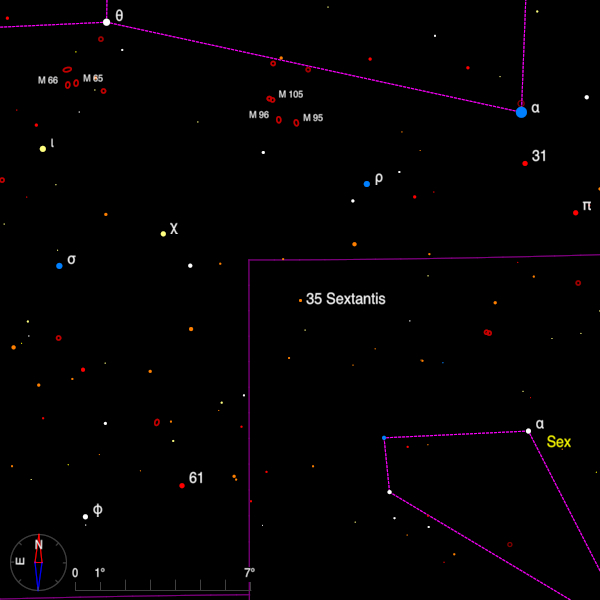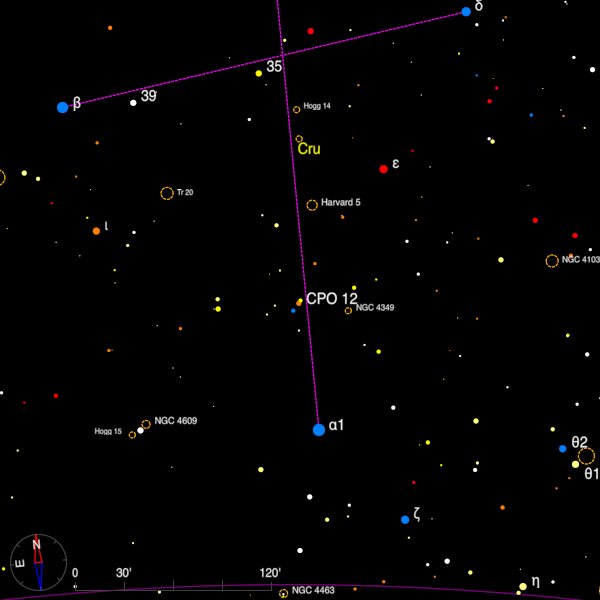April 2021 - Double Star of the Month
35 Sex (10 43 20.91 +04 44 51.6) lies south of the main body of the constellation of Leo and about 5 degrees SSE of the magnitude 3.9 star rho Leonis. It is a fine pair with the principal stars shining at magnitudes 6.2 and 7.1 and the current separation of 6".8 puts the pair within range of small apertures.

The angular motion in 2 centuries has amounted to about 2 degrees with the stars closing in very slowly. There seems to be no doubt that this is a binary pair - the Gaia EDR3 parallax data show that they are at 687 and 718 light-years respectively each with a formal error of about 22 light-years. Each star appears to be an early K giant which would imply that they should appear orange or deep yellow. Webb found colours of yellow and blue and later yellow and ruddy and noted that there was Much difference as to colours
.
Just over 5.5 arc-minutes away from AB in PA 210 degrees is a star of magnitude 8.1, which is the long period binary A 2769 - 8.4, 9.4, 207 degrees, 0".5.
Nestling within the bounds of the five main bright stars of Crux, CPO12 (12 28 16.88 -61 45 55.6) can be found 1.5 degrees N. of alpha Crucis (Acrux) and 20 arc-minutes east of the open cluster NGC 4349. The stars are V magnitudes 7.3 and 8.2 and with a current separation of 2".1 they can be easily seen in 75 to 100-mm aperture.

Since the pair was discovered in 1880 the position angle has reduced from 271 degrees to 183 degrees and a preliminary orbit by Dr. Andrei Tokovinin suggests that the period is about 690 years. In 1939, Robert Rossiter, using the 27-inch refractor at Bloemfontein in South Africa, noted that the B star was a close double. The Washington Double Star Catalog (WDS) gives a magnitude of 8.8 for each component. This is also a binary system but the stars are about ten times closer than A-B. The period is 28 years and the stars are currently 0".18 apart. By 2030 they will have reached their maximum separation of 0".24. There is another, much fainter companion - a star of magnitude 13.7 at 331 degrees and 7".9.
Acrux, of course, is a magnificent pair - see the column for April 2007 for more details.
Bob Argyle - Double Star Section Director